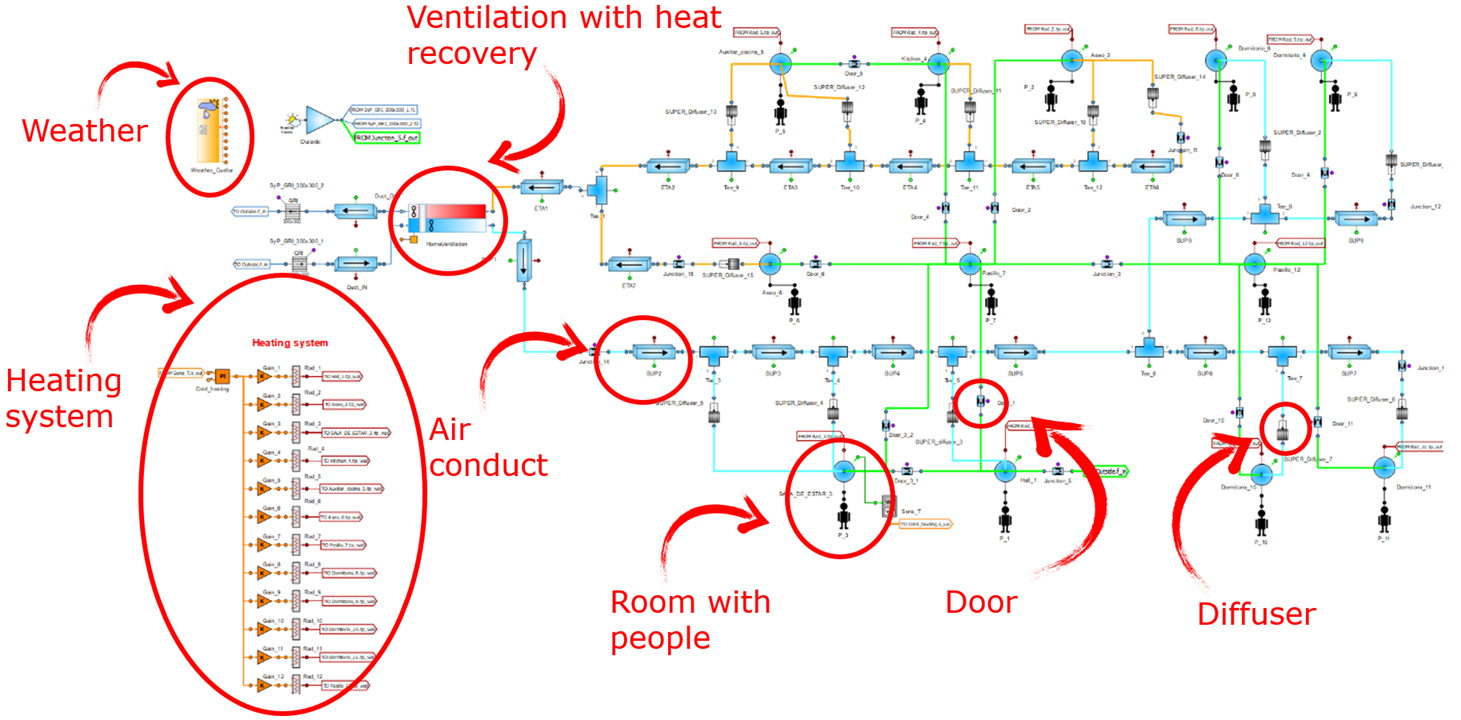A new toolkit for HVAC systems and building energy modelling tools in EcosimPro has been released within the H2020 Sphere European project. It allows the user to make digital twins of buildings for performing energy studies, optimization and real time simulations. These simulations can even include models of humans interacting with the rooms, CO2 control, a ventilation model, thermal impact, etc.
A connection has been created with the BIM and IFC standards to be able to export 3D models to the EcosimPro environment and automate model conversion in EcosimPro. The final simulation model can also be exported as a digital twin of the building. When there are a lot of appliances, walls, volumes and ducts like in our virtual building shown above, you can speed up the pre-processing cycle with a plugin to derive schematics from .ifc, a 3D BIM format. Then, after the simulation, a black-box can be created and integrated with a SCADA system to improve energy savings.

To simulate comfort, the first of these tools, the HVAC library, simulates the physics of fluid networks—heating, AC, tap water—and the air ducts with all their appliances: pumps, chillers, ducts, boilers, rooms, etc. Human ventilation models that can breathe in the room—taking in O2, giving off CO2 and water—and exchange heat can also be included. Meanwhile, the BUILDINGS library can be used to simulate the building itself (walls,doors, windows,etc.), as it contains all the architectural components that store, conduct, transfer and radiate heat.
The systems into which the air conditioning, ventilation and control loops are coupled are physically connected with the HVAC library. What’s more, the HVAC library allows the user to analyze transient aspects due to fluid inertia, wall friction and heat transfer. It also provides an extensive database of properties of real fluids and materials.

These libraries aim to fill in gaps about how our buildings work. These digital twins of buildings with humans inside them, so we could observe every physical magnitude and convert them into comfort and real money. They can be used to enhance building design, improve energy efficiency, and control our appliances with hardware-in-the-loop.